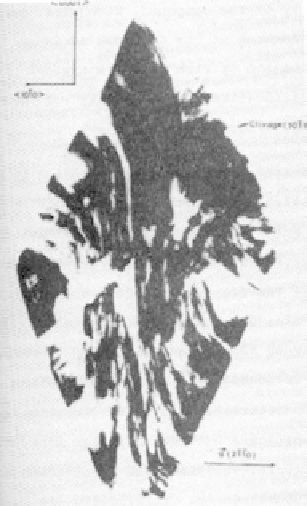Geoscience Reference
In-Depth Information
Figure 5.25 Lang X-ray topograph taken in (2110)
face
[90]
.
differ by their temperature behavior. Dislocation-related contrasts vary slightly
with temperature, but they appear more strongly, especially after the second ther-
mal cycle. The variation of contrast present in the topography for the growth bands
can be interpreted in terms of localized variations of the deformation in the sample
with temperature. These variations appear in the same temperature range as the
anomalies observed in propagation loss, frequency, and temperature characteristics.
These anomalies have been attributed to water impurities in these hydrothermally
grown crystals
[101,102]
. This explanation is qualitatively valid and in good agree-
ment with the changes of the deformation contrast observed during the thermal
cycles. The contrast due to the water impurity content is observed in selected areas
and is predominantly located at growth bands that correspond to the adsorption of
water on some growing faces during the cycle.
A combination of selected growth conditions reducing the water content and
using heat treatment to control the water distribution could be of great interest for
improving the piezoelectric device application of berlinite. The choice of the seed
is fundamental for the production of good crystal and a selection of excellent slices
for this use is absolutely necessary when this condition is fulfilled. The X-ray topo-
graphs obtained on different crystals have shown that the quality was improved but
the remaining defects could be classified into two classes. This is due to the defects
present in the seed which have been developed in the grown crystals (dislocations
and sometimes twins) and those which were carried during the start of the growth
(bundles of dislocations) or during the growth (growth bands).


